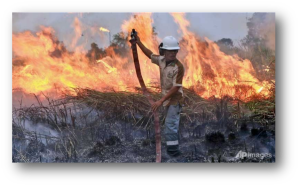During the past few months, a slew of epic wildfires have engulfed the country of Indonesia, resulting in a public health and environmental crisis. More than 100,000 land and forest fires have erupted in the nation, dealing massive damage and covering the country in smoke. As a result, air pollution levels have soared, significantly increasing the risk of respiratory disease.
More than half a million people have been already treated for respiratory illnesses in six affected provinces. In addition, the fires are contributing to global warming at a massive scale. They account for approximately 3% of all global emissions, and that’s just since this year’s
fires began.
Unfortunately, it is extremely difficult to cease the Indonesian fires. The fires burn long, low, and underground and need to be utterly soaked and flooded to be put out. The seemingly reasonable approach would be to prevent the fires from starting in the first place, but that places a major issue for the nation’s economy. Indonesia is the world’s largest producer of palm oil, which means that fires are routinely intentionally lit to clear the land. If companies are to stop creating man-made fires, then the palm oil industry would collapse, resulting in detrimental effects to Indonesia’s economy.
However, it’s not just the actions of humans that have contributed to this disaster. This year’s El Niño has only worsened the fires. The El Niño is a warming of the surface water of the eastern and central Pacific Ocean, occurring every 4 to 12 years and causing unusual global weather patterns. In Indonesia and elsewhere in Southeast Asia, the El Niño causes droughts. Under drought conditions, not enough precipitation falls to relieve the land from drought, so fires tend to get out of hand. The fires have been calculated to have so far cost the Indonesian government more than $30 billion.











